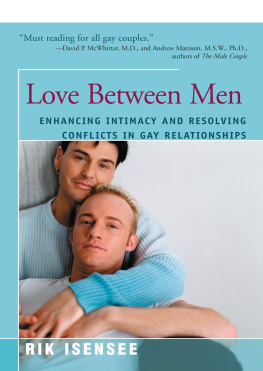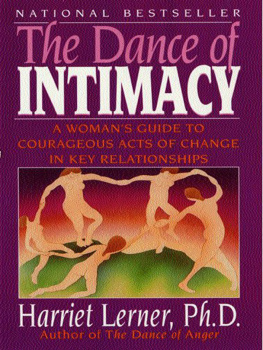Table of Contents
Guide
Pages
Copyright Page
Copyright Chris Rojek 2016
The right of Chris Rojek to be identified as Author of this Work has been asserted in accordance with the UK Copyright, Designs and Patents Act 1988.
First published in 2016 by Polity Press
Polity Press
65 Bridge Street
Cambridge CB2 1UR, UK
Polity Press
350 Main Street
Malden, MA 02148, USA
All rights reserved. Except for the quotation of short passages for the purpose of criticism and review, no part of this publication may be reproduced, stored in a retrieval system, or transmitted, in any form or by any means, electronic, mechanical, photocopying, recording or otherwise, without the prior permission of the publisher.
ISBN-13: 978-0-7456-7110-9 (hardback)
ISBN-13: 978-0-7456-7111-6 (paperback)
A catalogue record for this book is available from the British Library.
Library of Congress Cataloging-in-Publication Data
Rojek, Chris.
Presumed intimacy : parasocial interaction in media, society and celebrity culture / Chris Rojek.
pages cm
Includes bibliographical references and index.
ISBN 978-0-7456-7110-9 (hardcover : alk. paper) ISBN 0-7456-7110-1 (hardcover : alk. paper) ISBN 978-0-7456-7111-6 (pbk. : alk. paper) ISBN 0-7456-7111-X (pbk. : alk. paper) 1. Social interaction. 2. Intimacy (Psychology)Social aspects. 3. Celebrities. 4. Mass mediaSocial aspects. I. Title.
HM1111.R65 2015
302dc23
2015012744
Typeset in 10.5 on 12 pt Sabon
by Toppan Best-set Premedia Limited
Printed and bound in the UK by Clays Ltd, St Ives PLC
The publisher has used its best endeavours to ensure that the URLs for external websites referred to in this book are correct and active at the time of going to press. However, the publisher has no responsibility for the websites and can make no guarantee that a site will remain live or that the content is or will remain appropriate.
Every effort has been made to trace all copyright holders, but if any have been inadvertently overlooked the publisher will be pleased to include any necessary credits in any subsequent reprint or edition.
Epigraphs:
Donald Horton & R. Richard Wohl (1956) Mass Communication and Para-Social Interaction Psychiatry 19 (3): 21529. Reprinted by kind permission of The Washington School of Psychiatry.(http://www.wspdc.org)
Marilyn Strathern (2000) The Tyranny of Transparency British Educational Research Journal 26 (3): 30921. Reprinted by permission of John Wiley & Sons, Inc.
For further information on Polity, visit our website: politybooks.com
One of the most striking characteristics of the new mass media radio, television, and the movies is that they give the illusion of face-to-face relationship with the performer We propose to call this seeming face-to-face relationship between spectator and performer a para-social relationship.
Donald Horton and R. Richard Wohl
When I first got out in the yard I heard groups of men talking about how Sarah was going to marry Jim or how Frank had betrayed Susan, I thought, Damn, these cats all know each other and their families. That's odd. But after a few minutes I realized they were talking about soap operas. Television in prison is the great pacifier. They love Basketball Wives because it is T and A with women of colour. They know how many cars Jay-Z has. But they don't know their own history. They don't understand how they got here. They don't understand what is being done to them. I tell them to read and they say, Man, I don't do books. And that is just how the empire wants it. You can't fight power if you don't understand it.
Mumia Abu-Jamal (political prisoner in the USA, serving life without parole)
As the term accountability implies, people want to know how to trust one another, to make their trust visible, while (knowing that) the very desire to do so points to the absence of trust.
Marilyn Strathern
Living with Statistical Men and Women
Modern democracy is speared with a sharp paradox. Formally, it is a body of life and blood equals, primarily consisting, at the level of experience, of empty apparitions. For the greater part we are oblivious to the details of the real circumstances and destines of the human species of which we are a part. Yet we glimpse fractured aspects of them through media transmissions of various sorts. It is certainly not out of the question that we may be moved by the apparent circumstances, conveyed via the media, relating to multitudes of people, who we have never met, do not know and, in all probability, will never know. For a variety of reasons, relating chiefly to the force of the media in organizing moral density, we may have the temerity to feel that we belong to their story and vice versa. Notwithstanding this, for the most part we confine ourselves to issues surrounding our families and friends. Of course, some of us are passionately devoted to justice and matters of human dignity involving the lives of others. Nearly everyone respects a person of this stamp, even if they disagree with their specific political views. However, despite paying lip service to venerated Enlightenment ideals of individual responsibility and civic action, we are wary, highly provisional, travellers in the art of global human fellowship. The global media provide an outline of the conditions of the lives of the aggregate. As watchers we are party to the shallow surface of what we see. Because the TV eye and the world wide web seems to be empowering in exposing data for us, we may even affect to grasp a little bit more than the ordinary person might know about what is going on, out there in the world of people who are separated from us by the magnitude of distance. Still, they are very much exceptions to the rule. We may register global emergencies, injustice and suffering but for the most part we let them pass us by as distant, glancing relations having no direct, durable bearing on our personal responsibilities or sense of self. This is not necessarily a cause for self-reproach. How can knowledge of the global aggregate be anything other than shallow? The numbers in the world are so huge and diverse that their details exceed the capacity of the individual brain to capture them. We identify with the lives of others, but only with strings attached. Our lives, and the lives of those immediate relations who depend upon us, impose obligations and duties that are too relentless and unyielding. Their clamour for our attention, even while we register and feel for the pain and mortality of others, is insistent. So we devote the greater part of our lives to pursuing our narrow, private ends and those of the kith and kin networks to which we are attached.
However, global media society insistently imposes a counter-life upon us. We are constant, often furtive, watchers of the lives of others. Usually, we become activated only when the media seize upon an event, episode, incident or emergency deemed worthy of public attention. Even then, our emotional connection is tenuous and capricious. We live in a world of statistical men and women. Typically, our leaders speak of abstract numbers, rather than flesh and blood people, and champion or condemn them through briefings via press attachs and researchers rather than direct experience. There is a real sense in which relations in democracy are stamped with the mark of being once removed. Much of the mandate for official action is sheer word magic. The political challenge in the art of political rhetoric is to utter passable empathy with others. The combination of democracy and the global media impose presumed intimacies of the counter-life upon us. Not to care about the lives of others, or the condition of the planet, is to risk being stigmatized as selfish, irresponsible and heartless. Fiormanti (2014) shows convincingly that credit ratings, growth figures and other hard data have a powerful influence in public debate. But he also raises the point that these numbers are often misleading and are typically










